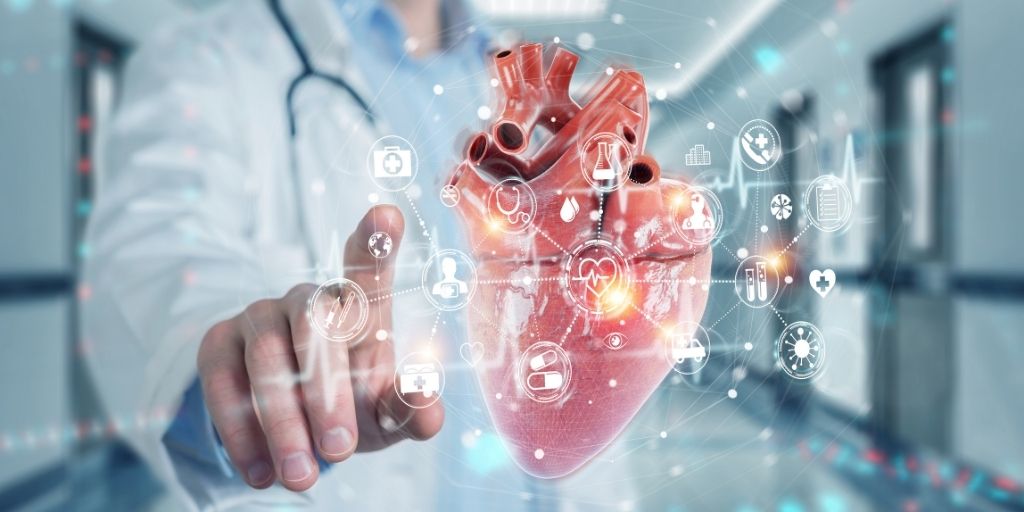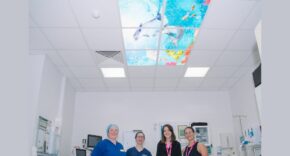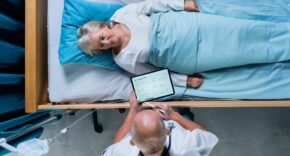
Wednesday, September 29th is World Heart Day, which was founded in 2000 by a global nonprofit dedicated to raising awareness of heart disease and stroke, as well as their prevention and treatment.
Heart disease remains the number one killer in most parts of the world, even in the face of the still-raging Covid-19 pandemic. It can be a silent killer – as in the case of ischemic heart disease, where narrowed coronary arteries can lead to sudden heart attacks – or it may display more obvious symptoms of a cardiovascular system in crisis.
Early diagnosis is critical. Lifestyle changes and certain medical treatments can reduce the risk of a major cardiac event. Fortunately, medical technology in this area is moving rapidly, with significant advances coming in both the detection and treatment of heart disease, such as the following five examples.
- Ultrasound AI Diagnostics
Physicians diagnose cardiovascular disease with both lab tests and heart scans. Some, like nuclear stress tests, MRIs and CT scans, are expensive and uncomfortable. But there are also far less invasive and more affordable options, like ultrasounds of the heart called echocardiograms.
AI solves the most common issues with using ultrasound as a diagnostic tool. Ultrasound image quality can depend on the machine used and the sonographer using the machine, leading to high rates of variability that result in misdiagnosis– one in five cases of heart disease is misdiagnosed. AI can reduce variability through more precise analysis than the human eye can match.
Ultromics is a global health technology company that provides a cloud-based AI solution that fully automates echocardiogram analysis for the most common markers of various cardiac diseases. With lower variability and greater review efficiency, clinicians can more accurately determine a person’s likelihood of developing heart issues that require management or treatment.
By operating via the cloud, Ultromics drives greater impact and savings for organizations, providing improved productivity and security. Software updates are made instantly and automatically so sites always have the latest innovation. Plus, sites can scale more quickly with greater flexibility.
- CT Predictive Analysis
AI can also help solve the upstream challenge of collecting high-quality ultrasounds at a time when experienced health care staff are in high demand and also exiting the profession in droves. CaRi-Heart, from Caristo Diagnostics, detects the invisible signatures of inflammation in the heart from CT scans. This gives a better prediction of the risk of cardiovascular disease, allowing more efficient targeting of medication and treatment.
It is designed as an “early warning system” to identify when a person’s heart may be showing signs of damage, but the arteries have yet to develop any hazardous obstructions. The system produces a “CaRi-Risk” figure, which can tell the patient their likelihood of having a fatal cardiac event within the next eight years.
- Novel Therapies
Pacemakers can lead to long term complications – primarily with respect to pocket and lead complications such as lead injury, dislocation and infection. Leadless pacing with the Micra AV, from Medtronic, offers an innovative approach for cardiac pacing while avoiding the pitfalls of transvenous pacemaker. Micra AV is 93% smaller than traditional pacemakers, the size of a “large vitamin capsule.”
The device is implanted to the heart via a thin tube called a catheter through a vein in the leg. The patient’s chest is not opened and the device is MRI and airport screening safe.
- Wearable Tech
Wearables promise unobtrusive health monitoring, but how unobtrusive is a chest strap? Research from Rice University promises smart clothes, which can monitor your health truly unobtrusively as you wear them. The technology is based on highly conductive carbon nanotubes that have been woven together to form a strong and flexible thread that can be machine washed, allowing for long-term incorporation into fabrics.
The new thread is robust and flexible enough to be machine sewn into fabrics, allowing the researchers to position it where they want, including where it makes maximal skin contact or in an area of interest, such as the chest for heart monitoring. The Rice University team incorporates the threads using zig-zag shapes to let the material elongate without breaking, as the fabric flexes and stretches during activity.
- Virtual Reality and Augmented Reality
A cardiologist at CentraCare Heart and Vascular Center performed the first structural heart procedure in the world using 4-D hologram technology from a company called EchoPixel. This truly mind-blowing technology lets physicians experience organs and tissues as physical objects, without special glasses.
A study published in the Journal of the American College of Cardiology found that use of the system in pre-surgical planning reduced operating time and improved implant device selection accuracy.
These are just a few examples of the myriad of discoveries that will change the face of early detection and treatment of heart disease, indicating that all those at risk of heart disease and related complications have much to look forward to as the technology evolves.












